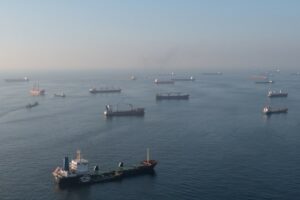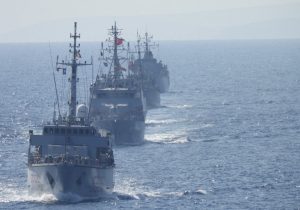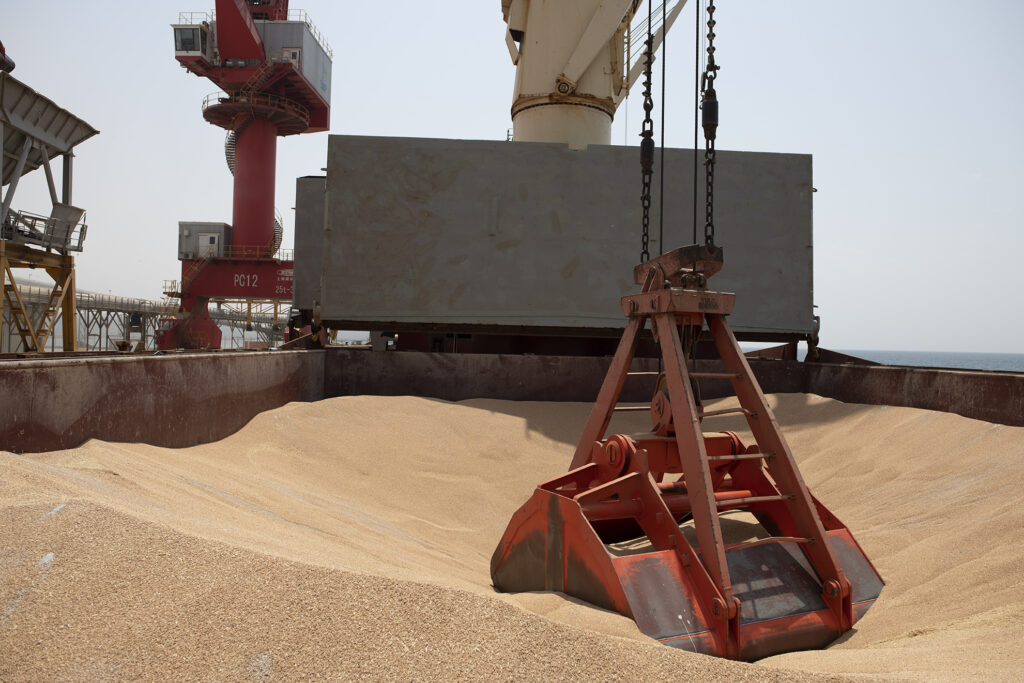Informall BG: Resumption of direct container transportation to Ukraine is a humanitarian need
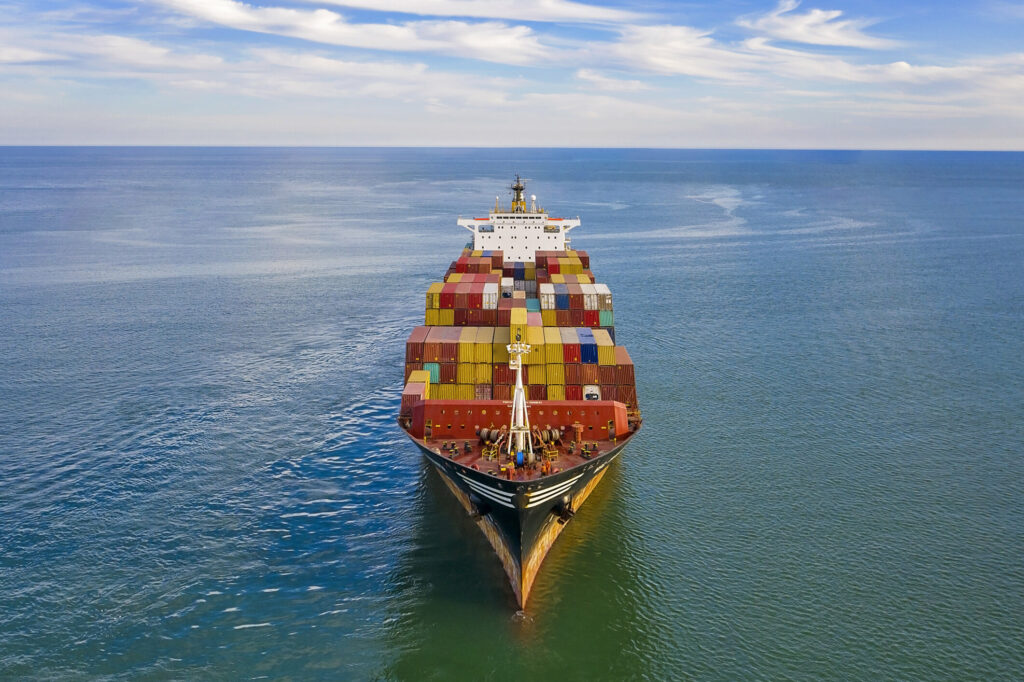
Informall BG – cargo analytical and consulting bureau based in Ukraine, offers one of the solutions to both the humanitarian crisis in Ukraine and the food crisis in the world.
Ukrainian seaports were blocked from the beginning of the russian invasion of Ukraine on February 24, 2022, until the Black Sea Grain Initiative allowed the first bulk carrier to safely leave the Odesa port on August 1. Russian aggression in the Black Sea and floating minefields along Ukrainian territorial waters has made free and safe shipping to and from Ukraine impossible. According to Lloyds List Intelligence, the russian Navy has carried out at least 12 attacks on civilian vessels since February 24, but there have been no further attacks since the signing of the Grain Initiative. As the end date of the grain deal approaches, moscow has expressed its concerns about the agreement at the UN and is ready to abandon the extension of the initiative next month if its demands are not met, according to Reuters.
Economic welfare
Naturally, the month-long blockade of sea transport routes had a significant impact on the country’s economy and its ability to quickly respond to nationwide humanitarian needs.
“Ukraine’s economy is suffocating today because of blocked seaports,” says Informall BG analyst Danylo Melnychenko. – Although the shipment of grain and vegetable oil has been resumed for some time in the ports of Greater Odessa, a number of other key export goods, such as ferrous metals, ores, slag, carbon black, etc., are limited only to alternative export routes. they do not belong to the categories of products of the Black Sea Grain Initiative. At the same time, import transportation through the Black Sea ports of Ukraine is still completely suspended for both container ships and bulk carriers.”
No container ships have entered Ukrainian ports on the Black Sea since February 24, and container terminals remain cut off from international liner connections. In particular, the Turkish liner operator Akkon Lines tried to establish a feeder connection between Turkey and the Ukrainian river port of Izmail on the Danube River. However, during the first voyage, Akkon Lines decided to suspend the service due to technical problems at the unloading port (Ismail) and the inability to meet the schedule.
Maersk Line is currently testing a new route using two self-propelled river barges on the Danube River for container transit connecting the port of Constanta, Romania, with two river ports in Ukraine, Izmail and Reni. Another major shipping company seeking to simplify Ukrainian container transit recently announced the cancellation of mandatory security deposits, which were supposed to provide a mechanism for compensation for container equipment in the event of equipment loss or damage on the territory of Ukraine. This step involves speeding up transit transportation from foreign ports to the final destination in Ukraine, as well as financial relief for shippers.
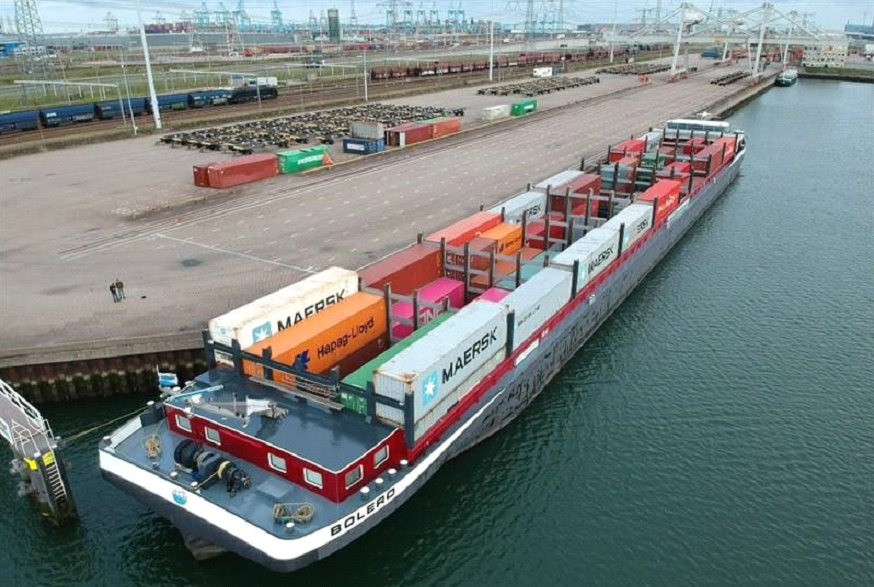
Alternative shipping routes are not an option for Ukrainians
“Despite the efforts of the international shipping community to provide alternative routes for import and export Ukrainian container transportation during the last seven months, no better logistical solution has been found so far than the restoration of Ukrainian container terminals on the Black Sea and the restoration of direct linear connections with our ports,” says Danylo Melnychenko
According to data from Informall BG, Ukraine’s cargo turnover in 2021 was up to 70,000 TEU (twenty-foot equivalent) per month, but due to the blocking of Ukrainian Black Sea ports, the country’s cargo turnover fell to the average level. 6,500 TEU per month – a significant decrease of 91%.
However, international sanctions imposed against russian goods and services do not seem to have had much of an impact on russian container trade in the Black Sea. According to the latest data from Informall, the total cargo container traffic of the russian port of Novorossiysk [Black Sea] fell by only 11% in the first half of 2022 compared to the first half of 2021, mainly due to the temporary suspension of some liner services by international shipping lines.
Below is a map developed by Informall BG showing new container shipping routes in Ukraine that did not exist before the war – except for Poland. Indeed, before the war there was little container traffic between the ports of Poland and Ukraine, but today Poland plays a much larger role in the movement of Ukrainian container cargo. According to the company’s analysis, about 60% of container traffic moves through Romania, another 35% of containers are delivered through Poland, and the remaining 5% are transported by alternative routes since the beginning of the war.
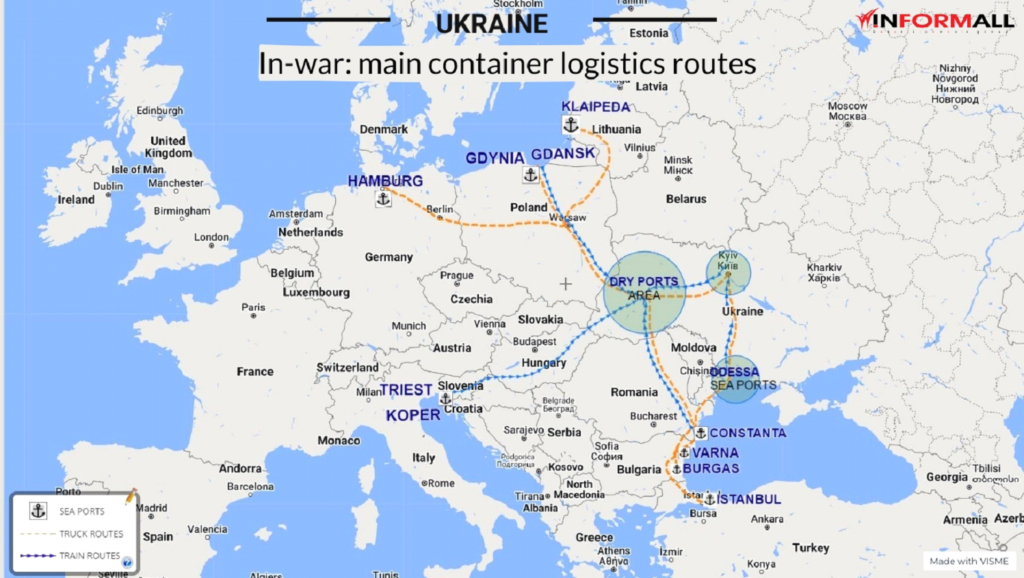
Additional costs for consumers
Container transportation has been an effective and affordable solution for Ukrainian importers and exporters for many years. From 2013 to 2021, Ukraine’s total container traffic increased significantly – by 30% from 780,000 TEU to more than 1 million TEU per year, according to Informall. Today, when a full-scale war is unfolding, container transportation in Ukraine has become an extremely difficult and expensive way to deliver commercial goods, and most importantly, humanitarian aid to Ukraine.
Informall BG spoke with leading freight forwarding agencies in Ukraine, who shared that the cost of container logistics to/from the country has increased significantly since the start of the war – by approximately 25-40% depending on the final destination in Ukraine. Together with the cost of delivery, the time of delivery of containers to Ukraine has increased significantly, mainly due to the “last mile” transportation. Informal experts say that the duration of “last mile” delivery [from port to final destination] has increased from the average. 1-3 working days [before the war] to 7-12 working days [during the war] by road.
Vasyl Veselovskyi, CEO of Informall BG, continues: “It is clear that if Ukrainian container terminals are opened today, sea freight rates to/from Ukraine will not be identical to neighboring Romania, which currently handles 60% of Ukrainian container traffic. Indeed, insurance premiums and the appetite of sea freight operators of conventional feeders will be the main factors that will affect the final cost of shipping to Ukraine. However, direct container transportation to the ports of “Great Odesa” would allow savings of at least 25% on each cargo due to affordable domestic truck rates, shorter “last mile” delivery distances, and the absence of cross-border transit procedures.”
Consultants Informall BG suggest that the new “Container Transportation Initiative” in the Black Sea could be the next step in mitigating the consequences of the war and simultaneously reviving some of Ukraine’s seaports.
Informall BG experts say: russia claims that Western military aid can be delivered to Ukraine in sea containers, motivating it by blocking Ukrainian container terminals. Russia expressed the same concern during the negotiation process of the “Black Sea Grain Initiative” between the UN, Turkey, russia and Ukraine, where Turkey, together with an international research group, established a Joint Coordination Center (JCC) in Istanbul, Turkey, in cooperation with the JCC, undertook commitment to ensure that no military equipment is delivered to Ukraine via bulk carriers assigned to Ukraine under the Initiative. Since the signing of the agreement, every bulk carrier entering Ukrainian ports has been inspected in the Bosphorus Strait before receiving permission to proceed to the ports of “Great Odesa”.
The “Container Transport Initiative” can work on the model of the “Grain Agreement”, where Turkey and the UN played the role of a mediator between Ukraine and russia. Although this time the initiative is aimed at supporting the most vulnerable sections of the population of Ukraine – civilians who suffered from the war.
Currently, humanitarian aid is delivered to Ukraine mainly through foreign ports followed by ground transportation by road and rail. The most urgent aid, which includes, but is not limited to, medical equipment and supplies, food and other civilian goods, is transported by air to the nearest foreign airport after similar ground transportation.
Logistics on routes is inefficient, expensive, and most importantly, time- and resource-consuming. Today’s much-needed humanitarian aid is delayed at Ukrainian borders due to heavy traffic congestion, exacerbating the current shortage of trucks and truck drivers in Ukraine. At the same time, railway transport carrying goods to Ukraine is also delayed due to inevitable additional cargo operations at Ukrainian borders. The difference in track width in the railway networks of the EU and Ukraine requires changing the track every time a railway car crosses the border with Ukraine; The limited capacity of Euro-railways and EU rolling stock contributes to even greater congestion at Ukrainian borders.
In addition to humanitarian aid, Ukraine needs tons of construction materials, construction tools, heavy equipment to repair buildings and, importantly, to rebuild civilian infrastructure. Given the approach of the winter period and the nature of the damage caused by the war, Ukraine is in dire need of large volumes of building materials, such as wall insulation, window glass and frames, roofing material, etc. In addition, recent mass Russian cruise missile and kamikaze drone attacks on power plants across Ukraine have caused power outages across the country, meaning generators and inverters need to be delivered as soon as possible.
Naturally, sea containers would be the most efficient and cost-effective way to deliver large volumes of necessary goods to Ukraine in a short time. Given the currently congested cross-border transport points in Ukraine for both trucks and trains, traditional container transport through Ukrainian seaports will facilitate the delivery of the necessary assistance to those in desperate need. Given the economic struggle, all parties will benefit from the resumption of direct container shipping, which will provide financial relief to Ukraine, its allies and sponsors, who deliver humanitarian aid and other essential civilian goods to the country via expensive alternative routes.
“Decreasing the cost of delivery due to the optimization of container logistics is an important contribution to increasing the amount of aid and shortening delivery times,” says Vasyl Veselovskyi.
Logistics model “Container Transportation Initiative”
It is important to remember that until February 24, the vast majority of sea containers destined for Ukraine were delivered via Greece, Egypt and Turkey, the main regional container hub. In 2022, there were only two direct shipping services in Ukraine – CMA CGM “Bosporus Express” and Maersk “ECUMED Service”, while the rest of the volume was delivered to Ukrainian seaports through various feeder connections.
Experts of Informall BG suggest that Turkey may organize inspection of sea containers with humanitarian aid and other non-military civilian cargo destined for Ukraine during transhipment through one of its seaports. Moreover, Turkey is able to “kill two birds with one stone” – when carrying out direct sea container transportation to Ukraine, feeder ships will be reloaded with export containers that will return Ukrainian grain.
Oleksandr Khromov, project manager of Informall BG, shares: “In Ukraine, it was a common practice to export small batches of grain in ocean containers – from 10 to 50 TEU per batch. Naturally, depending on the harvest season, monthly transportation volumes fluctuate. For example, according to our data, during August 2021 alone, Ukraine exported 6,000 TEU of various grain and vegetable oils in containers [where 1 TEU equals 24 metric tons]. This does not include other food exports such as meat, eggs, milk, beverages, fruits and vegetables, etc., which accounted for another 2,650 TEU in August 2021. If we look at the net weight of cargo that was exported in containers that month, the combined weight of food and grain is up to 50% of the total volume of export containerized cargo. Against the backdrop of today’s drop in sea freight rates and rising food costs around the world, the resumption of direct container service with Ukraine would be expedient from both a humanitarian and a business point of view. At the same time, the initiative will help overcome the food crisis in those countries that received Ukrainian grain, flour and vegetable oil in sea containers before the war: Oman, Yemen, Sudan, Kuwait, Somalia, Cameroon, Nigeria, Lebanon. there are several of them.”
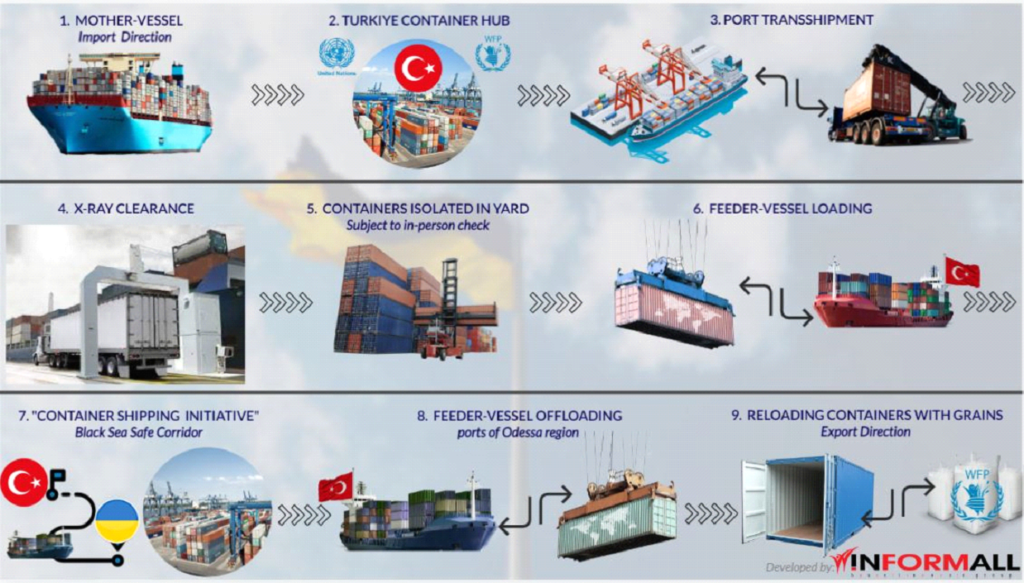
Informall experts say: The practice of x-ray scanning has proven to be effective, and this security method is commonly used in the container shipping industry in many countries, including the US. X-ray screening enables the rapid identification and isolation of suspicious cargo at the port of loading for additional scanning or personal inspection before the cargo reaches its destination. In our case, the containers will be scanned at the Turkish port to ensure that only non-military goods are delivered to Ukraine within the framework of the new “Container Transport Initiative”.
According to some manufacturers, the X-ray scanners can inspect vehicles at speeds up to 15 km/h and can inspect 120 vehicles per hour [not including analysis time]. Finally, after receiving the permit, the containers are loaded onto feeder vessels bound for the ports of the Great Odesa region through the Black Sea Safe Corridor. In the end, this approach will reduce the cost of delivery (compared to the current model of container handling during the war), as well as significantly less time and resources to organize the delivery of containers to Ukraine.
The restoration of direct container transportation to Ukraine is a matter of political will
“As in the model of the Black Sea Grain Agreement, Ukraine needs to apply to the UN for the earliest possible restoration of direct container traffic through the container terminals of Ukraine,” says Vasyl Veselovskyi. – In turn, the United Nations should initiate a negotiation process regarding the “humanitarian corridor” with russia, Turkey (or another country of good will – a container hub) and Ukraine in order to ensure safe container transportation to and from the seaports of Ukraine.
Coordination of the categories of goods that will be covered by the “Container Initiative” for import and export should also be part of the negotiation process. In essence, the “Container Initiative” that we are proposing is a copy of the already existing “Grain Agreement” that has been adapted for the container industry. Involvement of the UN in the negotiations and Turkey’s experience in the “Grain Agreement” – “Container Transport Initiative” is a matter of political will.
The shipping lines that are currently involved in moving containers to and from Ukraine have already established certain rules and procedures that have allowed them to balance the risks and costs of shipping in Ukraine well.
Data from Informall BG shows that Ukraine’s container traffic [during the war] is slowly increasing month-on-month, although this is largely due to the incredible amount of effort and resources that each member of the supply chain puts into it.
“It is important that there are no mandatory procedures for checking every sea container bound for Ukraine during transshipment through foreign ports. Various types of cargo can be delivered to Ukraine from foreign ports without physical or even X-ray inspection, which means that russia’s blockade of Ukrainian container terminals is more of an “economic war” than a real concern about military supplies that are delivered by sea containers directly into the country”. – says Danylo Melnychenko.
“These efforts, resources and funds, which today are spent on exhausting and complex intermodal container logistics, today can and should be directed to the fastest possible restoration of traditional direct container transportation to the seaports of Ukraine.” – experts of Informall BG believe.

